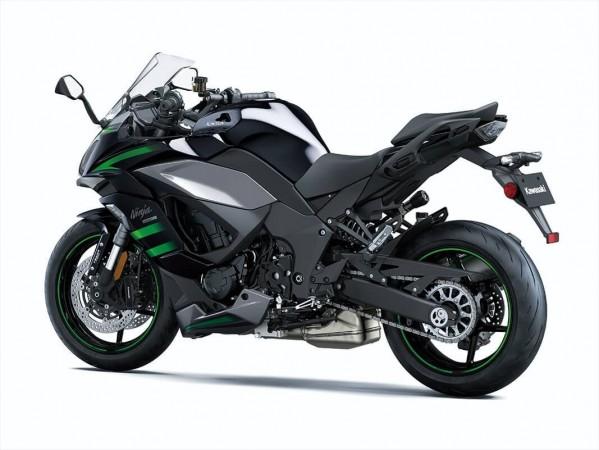When I reviewed the Kawasaki Ninja 1000 around six years ago, I had adjudged it the best litre-class sportbike for our conditions. I had reckoned that no other bike in its class, or around it, did more things better than the Ninja 1000. Guess what, six years down the line, I can still say the same. In fact, it now shines even more, and I shall briefly explain the whys and hows of it, but first let's discuss the new Kawasaki Ninja 1000's price.
2020 Kawasaki Ninja 1000 SX Price

Back then, it used to cost Rs 12.5 lakh and now the latest one launched around a week ago costs Rs 10.79 lakh. All prices mentioned are ex-showroom. Back then, it didn't have cornering ABS and traction control (it had your regular ABS and traction control), ride modes (just had two power modes), and a whole lot of other goodies (it didn't even have an assist and slipper clutch back then!), all of which (and more) became available on it in 2017 in India.
2020 Kawasaki Ninja 1000 SX Features and Specifications

The new Ninja 1000 has not only gained a suffix (SX) but a lot more tangible stuff as well in addition to the 2017 gifts: Ride-by-wire, cruise control, 4.3-inch TFT colour LCD, 4-into-2-into-1 exhaust system, up/down quickshifter, one more riding mode (customizable "Rider" mode, taking the total number of riding modes to four), better seats, Kawasaki's proprietary Rideology app (it shows lean angle, among other things) via which you can connect your phone, four-way adjustable windscreen, and Bridgestone Battlax Hypersport S22 tyres.
In fact, no other publication or portal in India has mentioned that this is the first time the Ninja 1000 is sporting ride-by-wire technology. Everyone had either incorrectly reported in 2017 (and then again in 2019) that the bike back then had ride-by-wire, or they just skipped mentioning it in their recent stories as well that the bike now gets ride-by-wire. Dear reader, you have now been informed correctly.

While at it, I noticed that the steering geometry has become sharper too—rake angle has been dropped by 0.5 degree and trail by 4 mm. Yes, that should make for quicker handling now. The camshaft profiles have been revised, and the suspension has been tweaked further as well.
The features added previously have obviously been retained (unless replaced by a newer unit, such as the aforementioned fully digital colour LCD now), and the prominent among those are: LED headlights, assist and slipper clutch, span-adjustable clutch lever (the brake lever was adjustable even in the 2014 bike), taller (by 15 mm) windscreen, and the entire electronics package.
The motor is the same 1,043cc inline-four producing the same amount of power and torque—142 PS and 111 Nm. However, while the power still peaks at 10,000 rpm like in the 2014 bike, the peak torque arrives at 8,000 rpm (it peaked at 7,300 rpm in the 2014 bike).

The seat height of the 2014 bike was 820 mm, which went down to 815 mm in the 2017 bike, and now it's back to 820 mm in the 2020 bike. A couple of reports also mention that the standard seat height has gone up to 835 mm, but you can get your bike with 815mm saddle too at no extra cost. As of now, please note that Kawasaki India has the seat height listed as 820 mm whereas Kawasaki USA says that it's 32.1 inches (815 mm).

And that, in a nutshell, the new Kawasaki Ninja 1000 is for you. This bike doesn't really have any direct competitor today in India. However, even when it had one (the oh-so-lovely Suzuki GSX-S1000F) for a few years, this Kawasaki came on top in almost every parameter. Right now, the 11.50-lakh-rupee BMW F 900 XR comes across as a joke in comparison.
















![India Auto Roundup: Maruti Suzuki, Mahindra have exciting launches in November [details here]](https://data1.ibtimes.co.in/en/full/805520/india-auto-roundup-maruti-suzuki-mahindra-have-exciting-launches-november-details-here.jpg?w=220&h=135)